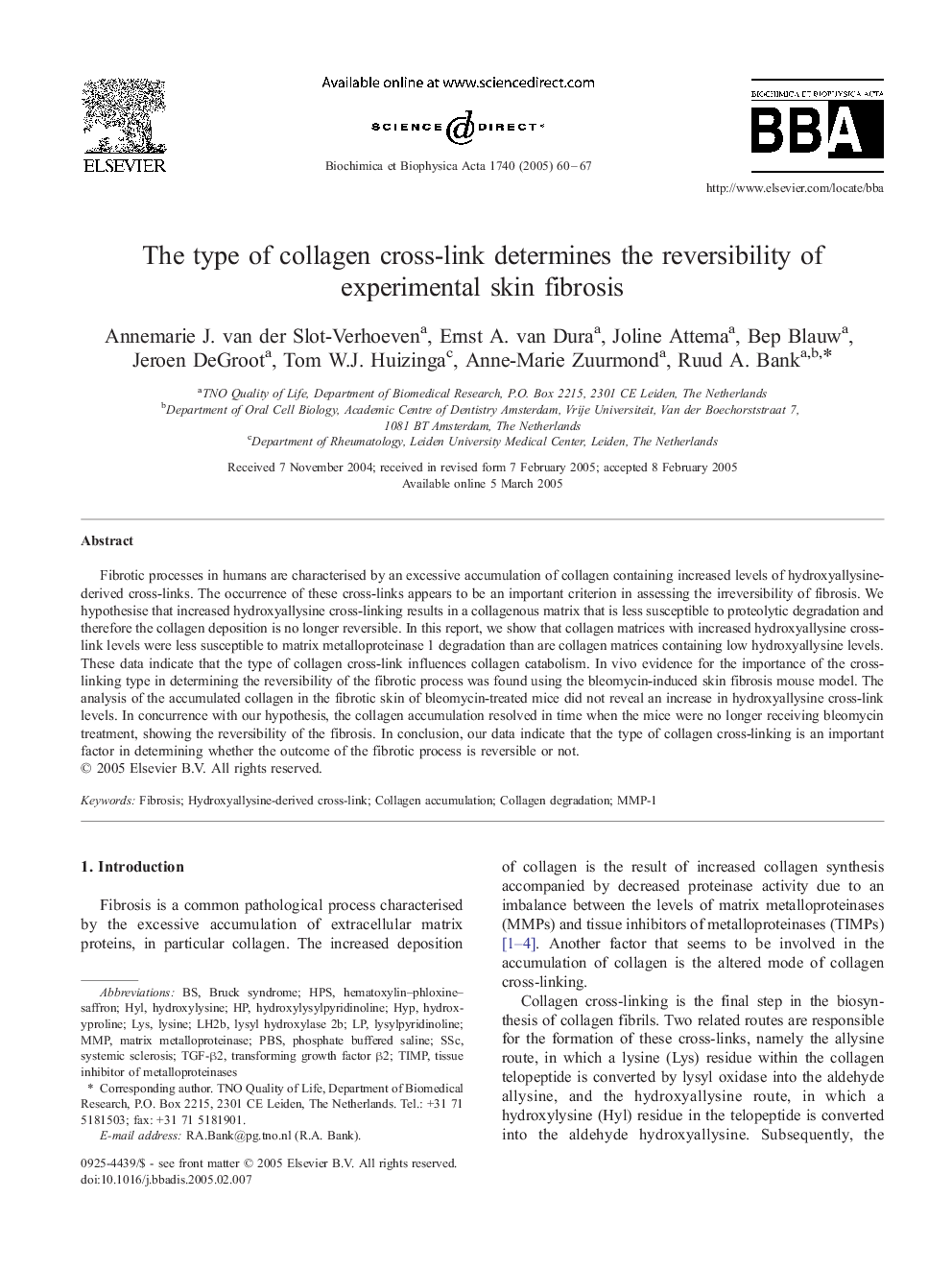| Article ID | Journal | Published Year | Pages | File Type |
|---|---|---|---|---|
| 9879500 | Biochimica et Biophysica Acta (BBA) - Molecular Basis of Disease | 2005 | 8 Pages |
Abstract
Fibrotic processes in humans are characterised by an excessive accumulation of collagen containing increased levels of hydroxyallysine-derived cross-links. The occurrence of these cross-links appears to be an important criterion in assessing the irreversibility of fibrosis. We hypothesise that increased hydroxyallysine cross-linking results in a collagenous matrix that is less susceptible to proteolytic degradation and therefore the collagen deposition is no longer reversible. In this report, we show that collagen matrices with increased hydroxyallysine cross-link levels were less susceptible to matrix metalloproteinase 1 degradation than are collagen matrices containing low hydroxyallysine levels. These data indicate that the type of collagen cross-link influences collagen catabolism. In vivo evidence for the importance of the cross-linking type in determining the reversibility of the fibrotic process was found using the bleomycin-induced skin fibrosis mouse model. The analysis of the accumulated collagen in the fibrotic skin of bleomycin-treated mice did not reveal an increase in hydroxyallysine cross-link levels. In concurrence with our hypothesis, the collagen accumulation resolved in time when the mice were no longer receiving bleomycin treatment, showing the reversibility of the fibrosis. In conclusion, our data indicate that the type of collagen cross-linking is an important factor in determining whether the outcome of the fibrotic process is reversible or not.
Keywords
Related Topics
Life Sciences
Biochemistry, Genetics and Molecular Biology
Ageing
Authors
Annemarie J. van der Slot-Verhoeven, Ernst A. van Dura, Joline Attema, Bep Blauw, Jeroen DeGroot, Tom W.J. Huizinga, Anne-Marie Zuurmond, Ruud A. Bank,
